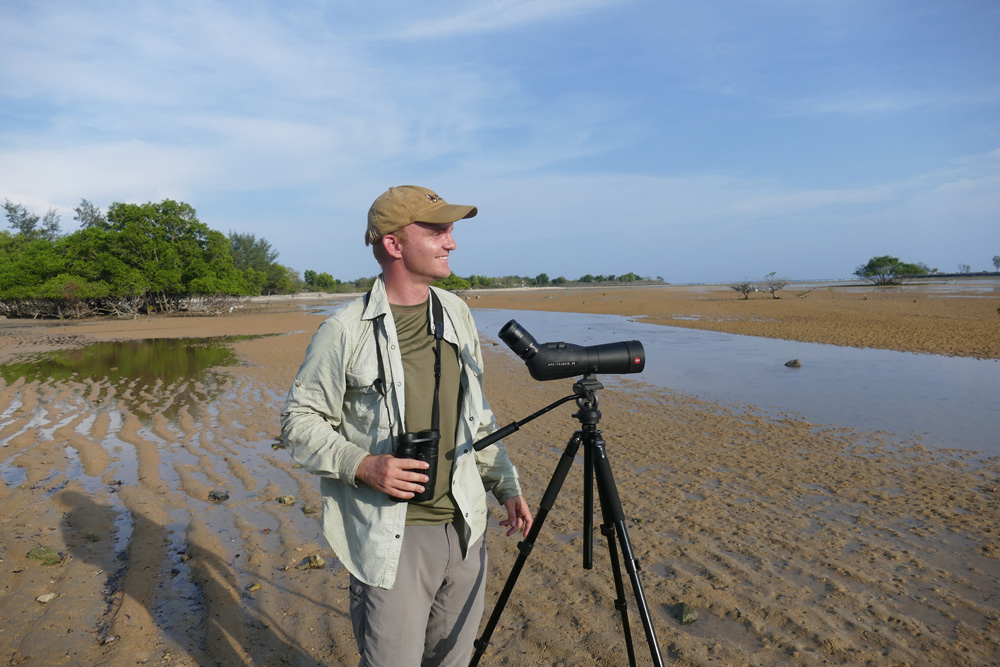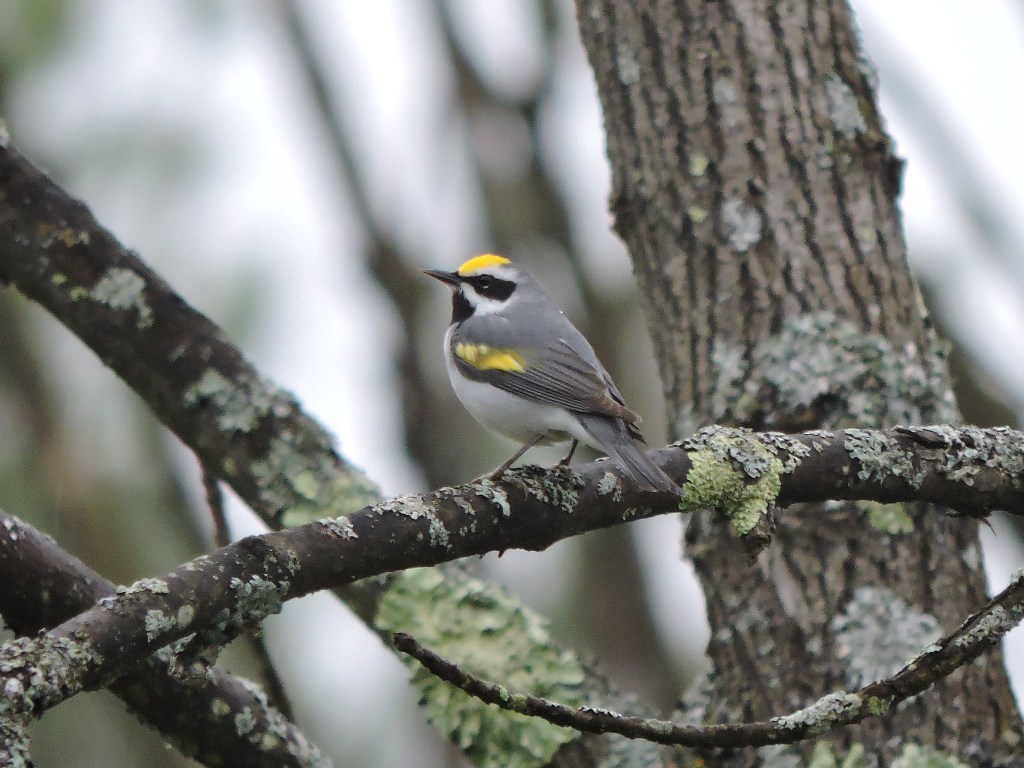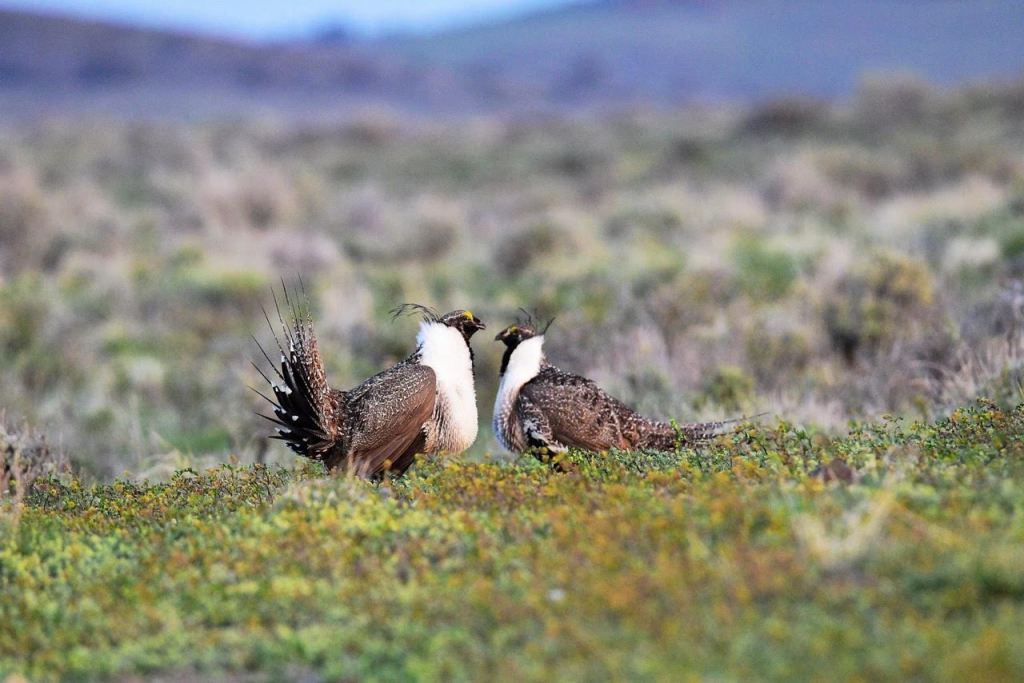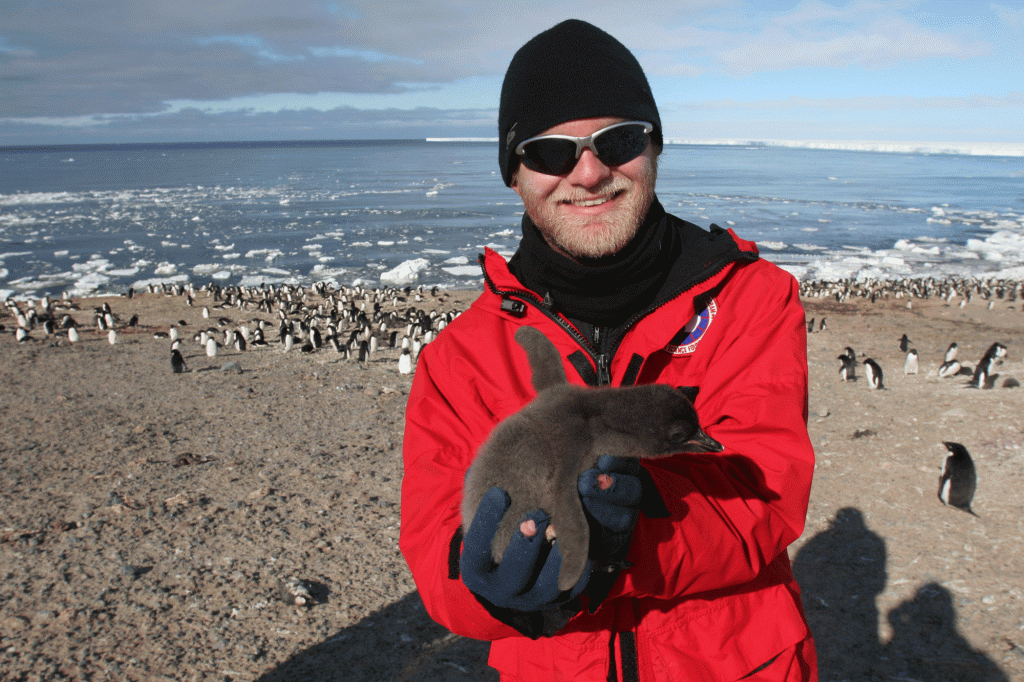As the clock struck midnight and the year ticked over to 2015, Noah Strycker, 29, sat in a hot tub aboard a boat south of Cape Horn near Antarctica, a bottle of Champagne in each hand, ice crystals forming on his white-blonde hair, binoculars looped around his neck. He watched the still-sunlit skies at the bottom of the world, waiting.
It was the first official day of Strycker’s round-the-world expedition to spot the most bird species in a year. (Spoiler alert: He would go on to shatter the record, sighting 6,042 species, more than half of all avian species on the planet, in 2015.) He’d planned his entire trip around starting in Antarctica—one of his favorite places—so a penguin could be number one on the list.
But the penguins weren’t cooperating. Instead, around 3am, bundled against the cold at the ship’s stern, Strycker finally spotted his first bird of the year: an unassuming petrel.
“Antarctica was probably the least strategic place to go, since there are only about 20 species on the entire continent,” he laughed, reminiscing. “I decided to start there because it holds a special place in my heart.”
Strycker first visited the frozen continent in 2008 to study Adélie penguins as an undergraduate research intern at Oregon State University. Dropped by a helicopter on the coastline along the Ross Sea south of New Zealand, he and two other researchers spent the southern summer camped out on the ice in subzero temperatures, tagging penguin chicks with GPS transmitters.
Even after sleeping for three months in a tent (with all his clothes on) sans heat, showers and civilization, he was hooked. “It’s amazing the places birds will take you when you pursue them against all logical extremes,” he said.

Strycker watches the birds in Bali. (Photo Courtesy: Noah Strycker)
To better understand Strycker’s fondness for petrels and penguins, you’d have to go back to 1997, when his fifth-grade teacher suction-cupped a bird feeder to the classroom window. Each time a new species appeared, she paused to identify it for the students, sparking in Strycker a lifelong love of birds.
At 11, he was already a prime birding candidate, as he “collected things obsessively,” he said, ticking off a laundry list of items like coins, stamps, even toilet paper rolls, the last of which he squirreled away in his bedroom until his mom finally tossed them in the trash.
“Some people say that birding is like collecting, hunting, gambling and an outdoor sport all rolled up into one,” he smiled.
Birders are avid list-makers. They keep track of the species they spot in their backyards, routinely pack binoculars in their carry-on bags and fill entire notebooks with scribblings of the birds they’ve seen.
But while Strycker likes adding new birds to his so-called life list, what he really loves is watching a single bird for most of the day just to see what it’s up to. Plus, he appreciates that birding takes him “way off the beaten path” to new places.
“You go where the birds go instead of where the tourists go, so you end up seeing a whole different slice of the world. It connects you to the outdoor environment in each destination, and also to the local people,” he said.
Researchers estimate there are currently between 200 billion and 400 billion birds flitting about the planet. In part due to their prevalence, scientists use birds to determine the health of an ecosystem. Some birds, like golden-winged warblers, are choosy about nesting in only the healthy young forests of the upper Great Lakes or the Appalachian Mountains, while species such as the sage grouse subsist mainly on sagebrush in the American West.

The golden-winged warbler nests in the young forests of the upper Great Lakes and the Appalachian Mountains. (Photo Courtesy: Noah Strycker)
Sage grouse–like many birds—are an easy species to count since they gather on the same mating grounds each spring. Scientists can use their annual population numbers as an indicator of how the sagebrush ecosystem as a whole is faring—an ecosystem that stretches across 11 western states and supports 350 other species.
“If you take care of the birds, you take care of most of the world’s environmental problems,” said Strycker. “They’re canaries in the coal mine for all kinds of pressures.”
Lately the canaries have been singing a warning tune. Research published this fall in Science found that North America has lost nearly 3 billion total birds over the past 50 years. This means there are 29 percent fewer birds today than in 1970.
The analysis showed a steep drop in bird abundance across ten major habitat types, including forests, tundra, coasts and grasslands. Most of the habitats saw between 20 and 50 percent fewer birds over the last half-century. Even species scientists tend to think of as common—like starlings, juncos or sparrows—declined precipitously.
The Science article didn’t speculate about the reason for the decline, but Strycker—like many experts—attributes it to habitat loss, much of it caused by human activity.
“In the 20 years I’ve been birding, I’ve mostly noticed local changes. One of my favorite birding spots was bulldozed for a strip mall. Another was converted into corporate farming. This kind of progress leaves dwindling space for nature, including birds.”
But the study also revealed that people can work together to protect bird habitats. For example, over the last 50 years, populations of raptors, like bald eagles and hawks, surged by 15 million individuals, thanks to conservation efforts like the banning of DDT. And ducks, geese and other waterfowl—once thought to be on the verge of collapse—swelled by 34 million due to cooperative wetland restoration initiatives.

Two male sage grouse face off in Idaho’s Owyhee Mountains. (Photo Credit: Ken Miracle)
“We see time and again that recovery is possible when we make the investment in conservation,” said Dr. David Naugle, the science advisor for the USDA’s Working Lands For Wildlife, which provides assistance to agricultural landowners who seek to protect at-risk landscapes across the nation.
Naugle believes private landowners are the key to success since they own the majority of the land near waterways. Riparian areas, or wetland, are the places that produce the most food for birds and other wildlife, including protein-rich plants like flowering forbs, insects and fish. Unsurprisingly, it’s easier to proactively conserve these habitats rather than react once a species is nearly extinct.
“It makes sense to conserve working lands in rural communities where ranching and forestry are the way of life,” said Naugle. “These land uses are very compatible with the needs of birds and wildlife—especially when the alternatives are strip malls, oil derricks or housing developments.”
Break out the binoculars
These days, Strycker spends his time finding new birding recruits, among other projects. One of the most direct ways to make a difference, he said, is by watching the birds yourself: Grab a set of binoculars and a field guide and notice what’s taking flight in your backyard or a nearby park. Or, join a local Audubon group for a free field trip to see which species frequent the skies near you.
“The most important thing you can do to help birds is to simply enjoy them. It’s easy—just step outside and keep looking up,” he said.
Once you’re confident identifying common species, consider sharing your sightings on eBird, the world’s largest citizen science biodiversity database. The data collected has been used in hundreds of research studies.
“Volunteer birders are integral for their contributions to science and conservation because they are constantly noticing what’s happening with birds and then sharing their observations,” said Zach Hutchinson, a community naturalist for the National Audubon Society in Wyoming.

Strycker poses with a penguin chick in Antarctica. Next, he’s headed to Elephant Island to study chinstrap penguins. (Photo Courtesy: Noah Strycker)
He encourages novice and pro birders alike to join Audubon’s annual Christmas Bird Count (CBC), a century-old, volunteer-based census that takes place from December 14 to January 5 all over the world. Last year, nearly 77,000 people participated, spotting a total of 59 million birds.
“These are really fun community events. It adds excitement and a bit of competition into birding, since you try to count as many birds as you can in a single day in one 15-mile-wide circle,” he said.
Strycker is a veteran of dozens of CBCs—he even organized the first-ever event in Antarctica. Strycker and the other two research interns counted “hundreds of penguins and a couple other birds” on Christmas Day in 2008.
This holiday season, he’ll be in Antarctica again, but he isn’t sure yet whether he’ll be able to participate in the CBC, since he’ll have his hands full launching a new research project as part of his master’s program in the School of Marine and Atmospheric Sciences at Long Island’s Stony Brook University.
“We’re going to set up a research camp on Elephant Island off the Antarctic Peninsula to study chinstrap penguins, which have never been surveyed before,” he said.
Elephant Island is the raw, windswept, nearly inaccessible spot where explorer Ernest Shackleton and his crew were famously marooned for several months in 1916. It’s ringed by glaciers and rocky cliffs, and battered by the massive waves that careen through the Drake Passage.
“I’m not sure where we’ll land the Zodiac,” said Strycker, “but I know it’s going to be a fun few months watching the birds.”
Related articles:
- We Need to Talk—About Climate Change
- 10 Ways to Incorporate More Nature Time Into Your Child’s Life
- The Best Places to See Stars


